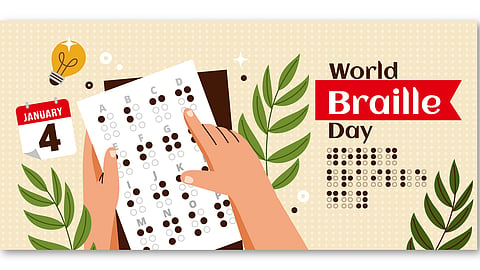Government Initiatives to Empower Visually Impaired Persons
The Government of India has launched numerous programs and partnerships to empower visually impaired individuals. These initiatives emphasize education, employment, and accessibility.
1. Accessible Information
Collaboration with the National Association for the Blind has made approximately 10,000 pages of documents, including government schemes and legal resources, accessible to visually impaired individuals.
Memorandums of Understanding (MoUs) signed with organizations like Inclusive Science and Vision Divyang Foundation focus on leveraging AI technology for accessibility. These include enhancing mobile apps and guiding individuals on eligibility for government schemes.
2. National Institute for the Empowerment of Persons with Visual Disabilities (NIEPVD)
Since its inception in 1943, the NIEPVD has been at the forefront of education, training, and rehabilitation for the visually impaired. In 2023-24 alone, the institute benefited 2,94,388 individuals through its programs and services.
3. Model School for the Visually Handicapped (MSVH)
The MSVH provides free education from early childhood to senior secondary levels. It also offers boarding, uniforms, books, and co-curricular activities for holistic development. In the academic year 2023-24, 243 visually impaired children were enrolled.
4. Braille Development Unit
The Braille Development Unit contributes to creating Braille codes in multiple Indian languages. The unit is currently working on the ‘Manual on Bharti Braille’ to promote Braille literacy and standardization across the country.
5. National Accessible Library
The NIEPVD hosts a National Accessible Library, offering materials in Braille, large print, audio, and E-pub formats. It serves over 55,000 members with an impressive collection, including:
1,58,901 Braille volumes
20,784 print books
7,100+ audio titles
The institute also hosts an online Braille library, Sugamya Pustakalaya, with over 6,79,120 titles.
6. Braille Production
The Government of India operates 27 Braille presses, including the Central Braille Press (established in 1951) and the Regional Braille Press (2008, Chennai). Together, they produce literature in 14 languages, including:
Assamese
Bangla
English
Garo
Hindi
Khasi
Kannada
Lusai
Nagamese
Punjabi
Sanskrit
Tamil
Telugu
Urdu
A Global Step Towards Inclusion
World Braille Day serves as a powerful reminder of the importance of accessibility and inclusivity in building an equitable society. The advancements in Braille technology and India’s robust initiatives continue to empower visually impaired individuals, ensuring their equal participation in every facet of life.
As we celebrate this day, the legacy of Louis Braille inspires us to strive for a world where no one is left behind.
References
United Nations. "Background | World Braille Day." United Nations. Accessed December 28, 2024. https://www.un.org/en/observances/braille-day/background.
National Institute for the Empowerment of Persons with Visual Disabilities (NIEPVD). Annual Report 2023-24. Accessed December 28, 2024. https://niepvd.nic.in/annual-report/.
(Input from various sources)
(Rehash/Dr. Sreelekshmi P/MSM)


